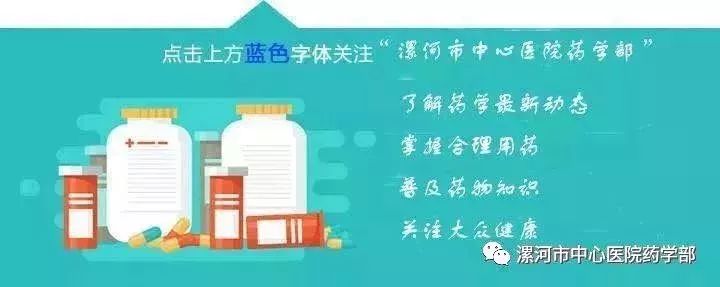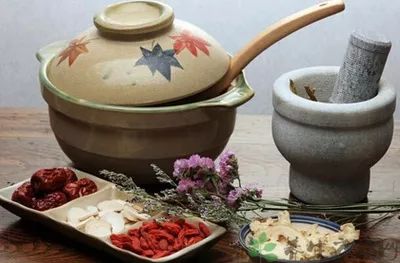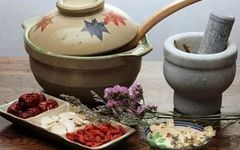
Traditional Chinese Medicine (TCM) decoctions refer to liquid preparations obtained by boiling Chinese medicinal herbs in water to extract their active components. They are one of the traditional forms of TCM and are central to TCM treatment of diseases. The term “tang” (汤) means to wash away, indicating that decoctions are quickly absorbed, easily exert their effects, and can be adjusted according to clinical needs. The methods of decocting and taking medicine have been highly emphasized in ancient TCM, and the correct preparation and administration of decoctions significantly affect their efficacy.

 1. Conventional Decoction Preparation Methods
1. Conventional Decoction Preparation Methods 1. Water for Decoction: Any drinking water that meets national standards can be used for decoction, as long as it is clean, odorless, and contains few impurities.2. Amount of Water: The water level should ideally be 3-5 cm above the surface of the herbs, or just enough to cover the back of the hand when pressed lightly on the herbs. Generally, floral and herbal medicines absorb more water, so after soaking for half an hour, if the water level drops, add more cool water to reach the standard level before starting to decoct.3. Soaking the Herbs: Soaking the herbs before decoction can increase the extraction of active components and shorten the decoction time. Generally, herbs primarily consisting of flowers, stems, and leaves should be soaked for 20-30 minutes; those primarily consisting of roots, seeds, tubers, and fruits can be soaked for about an hour.
1. Water for Decoction: Any drinking water that meets national standards can be used for decoction, as long as it is clean, odorless, and contains few impurities.2. Amount of Water: The water level should ideally be 3-5 cm above the surface of the herbs, or just enough to cover the back of the hand when pressed lightly on the herbs. Generally, floral and herbal medicines absorb more water, so after soaking for half an hour, if the water level drops, add more cool water to reach the standard level before starting to decoct.3. Soaking the Herbs: Soaking the herbs before decoction can increase the extraction of active components and shorten the decoction time. Generally, herbs primarily consisting of flowers, stems, and leaves should be soaked for 20-30 minutes; those primarily consisting of roots, seeds, tubers, and fruits can be soaked for about an hour.
4. Choice of Decoction Tools: It is best to choose stable materials that do not easily react chemically with the medicinal components and heat evenly, such as clay pots, enamel pots, or stainless steel pots. Avoid using pots made of iron, aluminum, or copper, as they have unstable chemical properties.
5. Decoction Time and Number of Times: The decoction time should be determined based on the nature of the herbs. Each decoction typically extracts about 45% of the active components. This means that after three decoctions, approximately 90% of the active components are extracted. If the herbs are only decocted once or twice, the total loss of active components can be 30%-55%, especially for tonifying herbs, so it is recommended to decoct twice. The first decoction should be for 20-30 minutes after boiling, while the second can be slightly shorter, about 15-20 minutes. Herbs for relieving exterior conditions and aromatic herbs should not be decocted for too long, ideally for 15-20 minutes after boiling, while tonifying herbs and those with hard textures require longer, about 40-60 minutes, with the second decoction time being slightly shorter.6. Heat Control: When decocting, use high heat (rapid fire) before the liquid boils, and switch to low heat (gentle fire) after boiling to prevent the decoction from drying out quickly, which would prevent the effective components from dissolving and affect efficacy.
7. Decoction Amount: After decocting, filter the liquid. The typical dosage for children is 100-300 ml per dose; for adults, it is 400-600 ml per dose, divided into two or three portions for administration.
 2. Special Decoction Methods for Specific Prescriptions
2. Special Decoction Methods for Specific Prescriptions
 For any herbs specified by the physician with special instructions such as “pre-decoct”, “add later”, “wrap decoction”, “melt”, “separately decoct”, “take with water”, “mix with water”, “decoct instead of water”, or “juice”, follow the instructions accordingly.
For any herbs specified by the physician with special instructions such as “pre-decoct”, “add later”, “wrap decoction”, “melt”, “separately decoct”, “take with water”, “mix with water”, “decoct instead of water”, or “juice”, follow the instructions accordingly.
1. “Pre-decoct” Varieties and Methods:
Pre-decoct varieties: raw oyster (sheng mu li), calcined oyster (duan mu li), raw dragon bone (sheng long gu), calcined dragon bone (duan long gu), raw dragon teeth (sheng long chi), vinegar turtle shell (cu bie jia), turtle shell (gui ban), raw purple quartz (sheng zi shi), tile root (wa leng zi), raw cold water stone (sheng han shui shi), Sichuan black (chuan wu), grass black (cao wu), aconite (fu zi), white aconite (bai fu zi), etc., or as directed by the physician.
Preparation method: Boil the pre-decoct herbs for 30-35 minutes before adding the other herbs to decoct together.


2. “Add Later” Varieties and Methods:
① Aromatic herbs with high volatile oil content should be added 5-10 minutes before the decoction is finished, such as mint (bo he), patchouli (huo xiang), and rose (mei gui hua).
② Herbs that lose efficacy with prolonged decoction should also be added later, such as Uncaria (gou teng), apricot kernel (xing ren), rhubarb (da huang), and senna leaves (fan xie ye), typically added 10-15 minutes before the decoction is finished.


3. “Wrap Decoction” Varieties and Methods:
① Pollen-type herbs, small seeds, and powdered herbs, such as cattail pollen (pu huang), and fine powder (dai he san), should be wrapped for decoction.
② Herbs with high starch content, such as floating wheat (fu xiao mai) and plantain seeds (che qian zi), are prone to charring during decoction and should also be wrapped.
③ Herbs with fine hairs should be wrapped to prevent hairs from falling off and irritating the throat, causing cough and discomfort. Common examples include Inula flower (xuan fu hua) and loquat leaves (pi pa ye).
Preparation method: Place the herbs in a pure cotton bag and decoct with the other herbs.


4. “Melt” Varieties and Methods:
Some gelatinous or sugary herbs, such as donkey-hide gelatin (a jiao), turtle shell gelatin (gui ban jiao), deer antler gelatin (lu jiao jiao), and maltose (yi tang), should be dissolved in an appropriate amount of boiling water and then added to the decoction.


5. “Separate Decoction” Varieties and Methods:
Separate decoction varieties: wild ginseng (ye shan ren shen), ginseng (ren shen), red ginseng (hong shen), American ginseng (xi yang shen), deer antler slices (lu rong pian), antelope horn slices (ling yang jiao pian), saffron (xi hong hua), and Cordyceps (dong chong xia cao), or as directed by the physician.
Preparation method: Place the herbs that need separate decoction in a suitable pot, add an appropriate amount of water, and decoct separately for 1-2 hours, then filter the liquid and combine it with the main decoction for administration.


6. “Take with Water” Varieties and Methods:
Some herbs that are difficult to dissolve in water, such as cattle gall (niu huang), Panax notoginseng powder (san qi fen), antelope horn powder (ling yang jiao fen), vermilion (zhu sha), and mercury (nao sha), should be finely ground and taken with the decoction. Fresh herbs, such as fresh bamboo juice (xian zhu li zhi), fresh raw land (xian sheng di), and fresh reed root (xian lu gen), should be taken as directed by the physician.
Administration method: Take with a small amount of warm water or with the decoction.


7. “Mix” Varieties and Methods:
Mixing varieties: Xuanming powder (xuan ming fen), bamboo juice (zhu li shui), bamboo paste (zhu li gao), fresh ginger juice (sheng jiang zhi), yellow wine (huang jiu), honey (feng mi), or as directed by the physician.
Administration method: No decoction is needed; mix into the prepared decoction.


8. For Other Special Requirements:
Follow the prescription requirements; for any other questions or concerns, please consult the dispensing personnel.

 3. Correct Administration and Precautions
3. Correct Administration and Precautions 1. How to Take After Decoction?(1) Temperature of the Decoction: Based on the condition.
1. How to Take After Decoction?(1) Temperature of the Decoction: Based on the condition.
1. Warm administration: Most decoctions should be taken warm. Especially for herbs that irritate the gastrointestinal tract, such as Trichosanthes fruit (gua lou ren) and frankincense (ru xiang), taking them warm can warm the stomach and benefit the spleen, reducing irritation to achieve therapeutic goals.
2. Cold administration: This means taking the decoction after it has cooled. Generally, cold decoctions are suitable for heat conditions.
3. Hot administration: Take the decoction while it is still hot. Generally, hot decoctions are suitable for cold conditions. For example, when experiencing wind-cold, it is essential to take the decoction hot and cover oneself with clothing or eat some hot porridge to help induce sweating, thus enhancing the efficacy of the medicine.
(2) Dosage of the Decoction
Specific dosages depend on the physician’s instructions and the condition. Some are taken in divided doses (multiple times), while others are taken in a single dose (all at once).
Divided doses: Suitable for chronic diseases or patients with mild conditions that can be treated gradually. One dose of decoction can be taken in 2-3 times, with each dose being 100-200 ml. Patients with vomiting should take smaller amounts.
Single dose: Suitable for acute diseases or patients with severe conditions requiring urgent treatment. One dose of decoction can be taken all at once. This allows the medicine to exert its full effect.
Additionally, critically ill patients should take smaller amounts more frequently; children should have the decoction concentrated to reduce the dosage.
2. Timing of Administration?
Decoctions are generally taken once a day, divided into two doses in the morning and evening. Whether to take them before or after meals mainly depends on the location and nature of the disease. Generally, diseases above the chest (heart, lungs), such as sore throat, cold, headache, and dizziness, should be taken after meals; diseases below the chest, such as stomach, liver, and kidney disorders, should be taken before meals; some herbs that irritate the stomach should be taken after meals; tonifying herbs should be taken on an empty stomach; sedative herbs should be taken before sleep; special formulas should follow the physician’s instructions.
2. Precautions:When taking TCM decoctions, avoid smoking and drinking alcohol, avoid spicy, hot, oily, greasy, and raw cold foods, and avoid overeating. Patients with skin diseases should avoid fish, shrimp, and stimulating foods. If taking Western medicine concurrently, space them 1-2 hours apart. Children, pregnant women, or the elderly should follow the physician’s instructions.
Editor: Yang Xiaoyu

Copyright Statement: This public account is purely non-profit. We focus on sharing, and some articles and images are sourced from the internet, with copyright belonging to the original authors. If there are any objections, please inform us, and we will delete them promptly.

Issue No. 140
Stay Tuned



